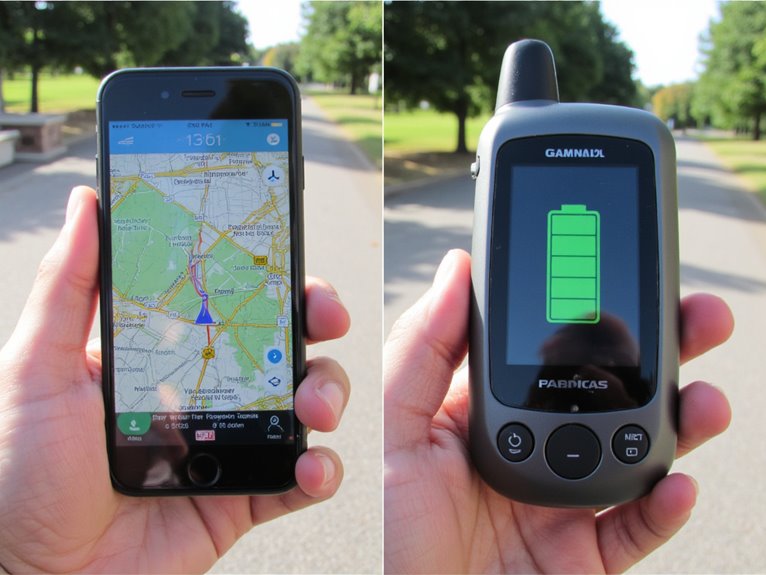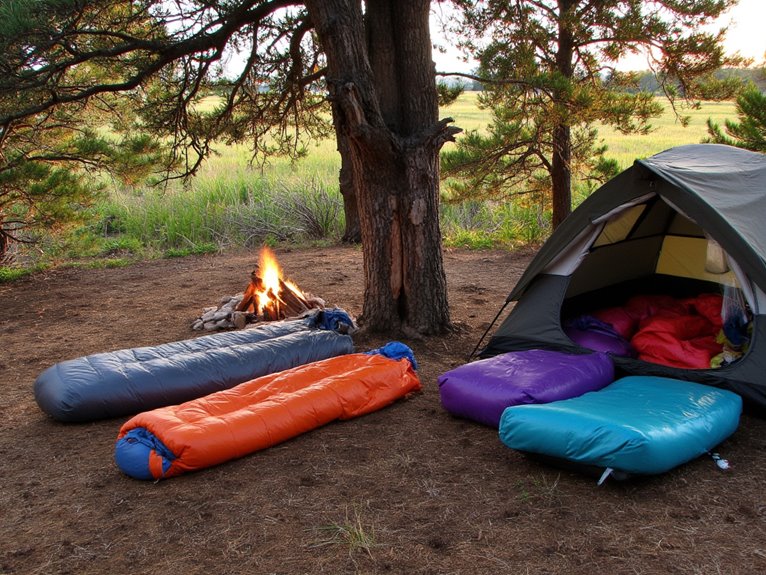What Is the Difference Between Bikepacking and Bike Touring?
Bikepacking and bike touring are two distinct approaches to cycling adventures, differing fundamentally in their philosophies, gear choices, and riding styles. Bikepacking prioritizes freedom and flexibility, encouraging riders to venture off the beaten path and connect with their surroundings, often opting for lightweight and versatile setups. Traditional bike touring, on the other hand, involves meticulous planning and preparation, focusing on route planning, loaded panniers, and racked bicycles. The approaches differ in their emphasis on flexibility, gear, and itinerary, ultimately shaping the cyclist's experience. As we delve into the nuances of each approach, the differences become even more pronounced, revealing the unique characteristics that define these two cycling disciplines.
We are supported by our audience. When you purchase through links on our site, we may earn an affiliate commission, at no extra cost for you. Learn more. Last update on 15th January 2026 / Images from Amazon Product Advertising API.
Understanding Bikepacking Philosophy
Embracing the bikepacking philosophy requires a mindset shift, where the traditional conventions of traditional touring are eschewed in favor of a more liberated, self-sufficient, and immersive approach to cycling. This ideology prioritizes freedom and flexibility, encouraging riders to venture off the beaten path and connect with their surroundings. Bikepackers often opt for lightweight, versatile setups, allowing them to navigate varied terrain with ease. By shedding the burdens of heavy luggage and rigid itineraries, riders can fully engage with their environment, fostering a deeper connection with the natural world and local cultures. This approach celebrates the joy of exploration, embracing the unknown and reveling in the simplicity of the ride.
Bike Touring: A Traditional Approach
In traditional bike touring, meticulous planning and preparation are vital to a successful journey. Two essential components of this approach are route planning essentials and loaded panniers and racks, which enable cyclists to navigate unfamiliar terrain and carry necessary gear. By focusing on these key elements, riders can set out on self-supported tours that balance adventure with comfort and practicality.
Route Planning Essentials
Effective route planning is crucial to a successful bike touring trip, as it enables cyclists to balance their physical capabilities with the demands of the terrain, ensuring a more enjoyable and stress-free journey. A well-planned route takes into account factors such as terrain difficulty, elevation gain, and available accommodations. Cyclists should research their route thoroughly, using online resources, maps, and local knowledge to identify potential challenges and plan accordingly. It's essential to think about daily mileage, rest days, and flexibility in the itinerary to accommodate unexpected events or changes in weather. By doing so, cyclists can create a realistic and achievable route plan, allowing them to focus on enjoying the ride rather than worrying about logistics.
Loaded Panniers and Racks
When it comes to carrying gear on a bike touring trip, a traditional approach involves loading panniers with supplies and attaching them to sturdy racks, a setup that requires careful consideration to ensure a stable and balanced ride. The panniers are typically mounted on either side of the rear wheel, with some riders also using front panniers or handlebar bags for additional storage. The racks themselves must be sturdy enough to support the weight of the panniers and their contents, and should be securely attached to the bike frame to prevent shifting or wobbling while riding. Properly loading and balancing the panniers is crucial to maintaining control and stability on the bike.
Route selection and navigation are essential components of bikepacking and bike touring, as they can make or break the success and enjoyment of a trip. A well-planned route can make all the difference between a leisurely ride and a grueling slog. Bikepackers often opt for rugged, off-pavement routes that take advantage of dirt roads, singletrack, and scenic byways. In contrast, bike tourists may prefer more established bike routes, bike paths, and quiet roads. Effective navigation requires a combination of map-reading skills, GPS technology, and old-fashioned wayfinding. By choosing the right route and knowing how to navigate it, riders can maximize their time on the bike and minimize the stress of getting lost.
Gear and Packing Strategies
In the realm of bikepacking and bike touring, the gear and packing strategies you employ can make all the difference between a comfortable, enjoyable ride and a frustrating, exhausting one. Effective packing requires careful consideration of the essentials, clever use of storage solutions, and a commitment to lightweight travel. By focusing on these key areas, cyclists can optimize their gear and packing strategies to maximize comfort, efficiency, and overall riding experience.
Bikepacking Essentials
As you prepare to set out on your bikepacking adventure, it's vital to carefully curate your gear and develop a packing strategy that balances functionality with portability. Bikepacking essentials include a reliable bike, durable luggage, and camping equipment. Invest in a bike designed for off-road excursions, fitted with sturdy wheels and a comfortable saddle. Select luggage that is waterproof, durable, and attaches securely to your bike. Camping gear should be lightweight, compact, and easy to set up. A sleeping bag, pad, and tent are must-haves, along with a portable stove, cooking pot, and utensils. Don't forget a first-aid kit, basic toolset, and a reliable navigation system. By prioritizing these essentials, you'll be well-prepared for a successful and enjoyable bikepacking experience.
Lightweight Packing Tips
Mastering the art of lightweight packing is crucial to a successful bikepacking adventure, where every gram of weight and inch of space counts. To minimize bulk and maximize efficiency, it's essential to prioritize the essentials and eliminate unnecessary items.
Here are three key strategies to help you pack light:
- Choose multi-use items: Select gear that serves multiple purposes, such as a jacket with built-in wind and water resistance.
- Pack clothes that can be layered: Bring clothing that can be layered to adjust to changing temperatures, reducing the need for multiple items.
- Opt for compact and compressible gear: Select gear that is specifically designed to be compact and compressible, such as sleeping bags and pads.
Efficient Storage Solutions
A well-organized bikepacking setup relies on efficient storage solutions that balance accessibility with compactness, ensuring that essential gear is easily retrievable while maintaining a streamlined profile. This is achieved through the strategic use of bags, pockets, and compartments that maximize space while minimizing bulk. For instance, frame bags with cleverly designed compartments can store tools, tubes, and other essentials, while handlebar bags can accommodate navigation devices, snacks, and other frequently accessed items. By allocating gear to specific storage zones, riders can quickly locate what they need, reducing stops and increasing overall efficiency. By optimizing storage, bikepackers can focus on the ride, not the rig.
Types of Bikes and Accessories
When it comes to bikepacking and bike touring, the type of bike and accessories used can significantly impact the overall riding experience and efficiency of the trip. The right bike and gear can make a world of difference in terms of comfort, performance, and overall enjoyment.
Some key considerations for bikepacking and bike touring include:
- Drop-bar mountain bikes: Ideal for bikepacking, these bikes offer a comfortable riding position and ample storage space for gear.
- Touring-specific bicycles: Designed for heavy loads, these bikes feature sturdy frames, reliable components, and ample storage capacity.
- Accessory selection: Choosing the right accessories, such as handlebar bags, seatpost-mounted bags, and frame bags, is crucial for efficient storage and easy access to gear.
Camping and Accommodation Options
How do you plan to rest and recharge after a long day of bikepacking or touring, and what accommodation options will best suit your needs and preferences? Bikepackers often opt for lightweight, portable camping gear, allowing them to pitch camp in remote areas. In contrast, bike tourists may prefer established campsites with amenities like showers and laundry facilities. In terms of indoor accommodations, bikepackers might choose budget-friendly options like hostels or Airbnb, while bike tourists might prefer hotels or bed-and-breakfasts. Ultimately, the choice of accommodation depends on personal preferences, budget, and the type of trip. Regardless, it's essential to research and book accommodations in advance, especially during peak travel seasons.
Food and Hydration Planning
Proper nutrition and hydration are essential components of a successful bikepacking or touring trip, as they directly impact energy levels, overall health, and mental well-being. A well-planned food and hydration strategy guarantees that riders can maintain their energy levels and perform at their best.
When planning your trip, consider the following key factors:
- Caloric intake: Verify you're consuming sufficient calories to match your energy expenditure, taking into account factors such as terrain, climate, and individual needs.
- Hydration strategy: Plan for regular water intake, considering factors such as water availability, purification methods, and electrolyte replenishment.
- Food storage and preparation: Consider lightweight, high-calorie food options, and plan for food storage and preparation methods that are suitable for your trip duration and terrain.
Mental and Physical Preparation
Mental and physical preparation is a critical component of bikepacking and touring, as it enables riders to build resilience, develop effective coping strategies, and optimize their overall performance. A well-structured training plan can help riders improve their cardiovascular endurance, muscular strength, and flexibility. Additionally, incorporating mental preparation techniques such as visualization, mindfulness, and positive self-talk can help riders develop a strong mental game. It's essential to assess individual fitness levels, set realistic goals, and gradually increase training intensity to avoid burnout or injury. By prioritizing mental and physical preparation, riders can confidently tackle challenging routes, adapt to unexpected setbacks, and enjoy a more fulfilling bikepacking or touring experience.




